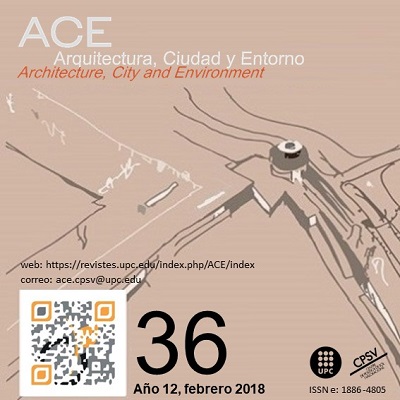Condiciones para el uso de la infraestructura de transporte masivo. La línea 3 del tren ligero en el Área Metropolitana de Guadalajara, México
DOI:
https://doi.org/10.5821/ace.12.36.4848Palabras clave:
Transporte masivo, tren ligero, uso del transporte público, megaproyectosResumen
Objetivo
Varias metrópolis latinoamericanas están construyendo infraestructuras de transporte masivo como una fórmula que permita sustituir el uso creciente del automóvil y aliviar los problemas urbanos de sustentabilidad. Apoyándose en la creciente literatura sobre los 'megaproyectos' y sobre el uso de los medios de transporte público, este artículo tiene por objetivo investigar las condiciones para que la ciudadanía haga un uso efectivo de esas infraestructuras para el caso de la Línea 3 del Tren Ligero del Área Metropolitana de Guadalajara, México.
Metodología
La metodología que guía a esta investigación se basa en la realización de una encuesta aleatoria a 800 sujetos dentro de un radio de 1 kilómetro respecto al trazado de la línea.
Conclusiones
Como conclusiones se señala que la línea sólo va a ser utilizada de forma decidida por una parte de la ciudadanía que al presente es cautiva de la deficiente red de micro-buses. Si se pretende garantizar un uso efectivo más generalizado, es necesario acompañar esta intervención por medidas integrales y complementarias que hagan atractiva la nueva infraestructura.
Originalidad
La originalidad de este artículo consiste en complementar las aportaciones que se han realizado sobre el cambio hacia el uso del transporte público, contando con las difíciles condiciones del servicio en el contexto de una urbe latinoamericana.
Publicado
Número
Sección
Licencia
COPYRIGHT
El contenido de los artículos y los comentarios en ellos expresados son responsabilidad exclusiva de sus autores, y no reflejan necesariamente la opinión del comité editor de la revista. Los trabajos publicados por ACE pueden reproducirse bajo la licencia CC-BY-NC-ND 3.0 ES más información http://creativecommons.org/licenses/by-nc-nd/3.0/es/
Lo que implica que las personas autoras sólo retienen y mantienen los derechos de Copyright dentro de las limitaciones incluidas en la licencia anterior.





































